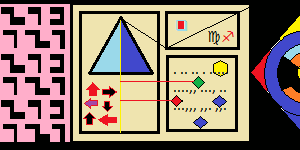2021-09-12 at 3:16 PM UTC
in
Fona 9-12-2021
rumor has it she can be had for a pound of thick cut bacon and 2 whoppers with cheese
2021-09-12 at 2:57 PM UTC
in
Ever feel alone in a crowd?
It’s all due to enforced social distances
2021-09-12 at 2:48 PM UTC
in
Fona 9-12-2021
Your boss called
He says you’re fired ☕️
2021-09-12 at 2:47 PM UTC
in
What is your first memory?
I’m having a sale on CRACK today
2 jellybeans for the price of 3
That’s actually very white of U
That’s not very white of U
They both look like trannies
2021-09-12 at 12:42 PM UTC
in
Unban Jiggaboo_Johnson
At least Lanny could explain why he was banned
Even though the concept of mRNA vaccines sounds relatively advanced, it dates back to 1995, when Robert and his team designed the first mRNA vaccine that encoded cancer antigens.
All this work in mRNA therapeutics laid the cornerstone of the first mRNA company ever founded: Merix Bioscience (1997).
In 2009, researchers conducted the first-ever trial on cancer immunotherapy using mRNA-based vaccines in human subjects with metastatic melanoma. The results of the trial showed an increase in the number of vaccine-directed T cells against melanoma.
In 2020, the FDA approved the first mRNA-based vaccines against an infectious disease SARS-CoV-2. This was only made possible by decades of research on mRNA-based therapeutics.
The science behind the new COVID-19 vaccines has not been rushed. In fact, these vaccines are building on decades of scientific research.
The story involves hundreds of people all over the world and highlights the importance of fundamental and applied research. Advancements in our understanding of messenger RNA (mRNA) and its potential for use in medicines, along with the creation of new technologies over the last 30 years, made these vaccines possible. Recent research on coronaviruses, in particular, made these vaccines effective.
Having the ability to become fully invisible then I could fuck random women without me being seen so it’s only the women seen wriggling herself sexually in public.
2021-09-11 at 8:40 PM UTC
in
What is your first memory?
I remember before I was born, first not having a consciousness and being a bodyless entity in a dark warm place, and then having an emerging consciousness that was warm and happy in this dark warm place and then being telepathically told by a tall thin being in robes “It is time for you to be born now.”
And then being very sad, because I did not want to “go” aka come to earth, but it was more like I was being made to “walk the plank” against my will and I was so sad that I had to come to this earth and I have basically been sad a lot of the time I have been here.
And finally
Gene therapy - from idea to reality Gene therapy was originally proposed 45 years ago, but it is only during the last 5-10 years that significant clinical benefit has been demonstrated. Gene therapy is in most cases in the form of engineered viruses carrying a therapeutic gene. Examples of successfully treated disorders are primary immunodeficiencies and hemophilias. In some cases, gene therapy consists of genetically modified cells, such as when chimeric antigen receptors are stably introduced into T lymphocytes, and used as tumor therapy, mainly for leukemias. Genetic therapy also includes oligonucleotides, which consist of around 20 nucleotides. Several such compounds have been approved for clinical use. Gene editing, which was a utopia, only a few years ago, has now become a clinical reality. In the main, rather small patient groups have been treated and a future challenge is the scale-up of manufacturing processes and the cost-effective use of the new therapies.
🦠🚫💉👍🏼
The concepts of gene therapy arose initially during the 1960s and early 1970s whilst the development of genetically marked cells lines and the clarification of mechanisms of cell transformation by the papaovaviruses polyoma and SV40 was in progress. With the arrival of recombinant DNA techniques, cloned genes became available and were used to demonstrate that foreign genes could indeed correct genetic defects and disease phenotypes in mammalian cells in vitro. Efficient retroviral vectors and other gene transfer methods have permitted convincing demonstrations of efficient phenotype correction in vitro and in vivo, now making gene therapy a broadly accepted approach to therapy and justifying clinically applied studies with human patients.

